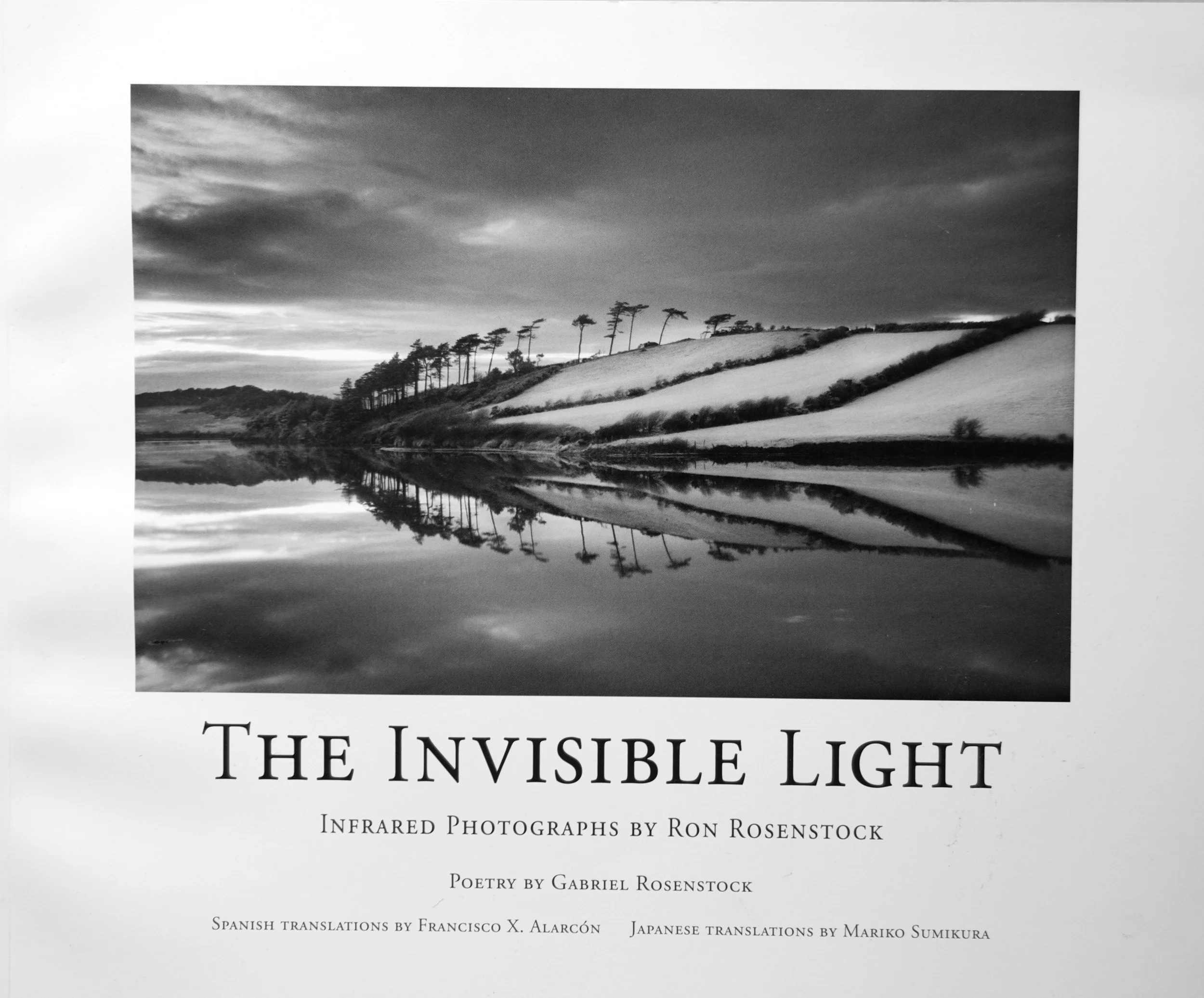The Invisible Light by Ron Rosenstock
The Invisible Light by Ron Rosenstock
Featured in numerous photographic art websites, The Invisible Light is a stunning book of my infrared photographs with poetry by the incredible Irish poet Gabriel Rosenstock. It contains 25 infrared images with Gabriel's poems in English, Irish, Spanish and Japanese. It is a very special book to me, and I hope it will be for you as well.
Every copy is personally signed.
56 pages by Gazelle Distribution, 2012.
Customer Reviews:
"When I first went through Ron Rosenstock's book, "The Invisible Light" I immediately was struck with "this isn't what I expected." I was reminded of the old adage that the best photographic techniques when used should not detract from the image or distract the viewer. If you're interested in the use if infrared in photography that does not overpower the experience of the imagery, I would highly recommend this work. I suspect but don't know that Ron's experience with large format black and white film taught him how to work with tones with subtlety and finesse which he was able to use in his work with infrared. I found the book to be of great interest technically but that's really not the point of the book, at all.
The imagery is the star of the show. The images are from around the globe, landscapes, seascapes and portraits of trees or groves. Wonderful subjects all. To me, they reflect a sense of appreciation for nature and the specific locations, but also a sense of mystery. The darker tones one would expect to find with the use of infrared in the landscape create a spiritual sense of the imagery, perhaps in some cases a haunting sense. Plate number 15, Tide Ripples from Iceland has got to be the most provocative and yet simple images of waves I've ever seen. You can really feel the power and timeless of the sea, on what appears to be a dark, stormy morning. This image also exemplifies the consistent simplicity of the compositions Ron has chosen. These are wonderfully free of distractions, allowing you to really explore the subject. Plate No. 9, The Gorge at Letterkeen, from Ireland is a wonderful example. It's a simple waterfall, a river running through rocks with just a touch of vegetation on the right hand side. You can get lost in the Gorge.
As I implied above, for me, when I look at the photographs, I completely forget about how they were made, The use of infrared clearly though reveals shapes and vegetation on some of the plates. It creates a different set of contrasts as well, perhaps. The rocks are darker, as they reflect less of the infrared spectrum. Allowing the rocks to go dark, yet with still a hint of detail, may be what helps the highlights do their work without being so overpowering. This is my personal experience of the imagery though. I wish I knew the secret.
The images are wonderfully reproduced, just slightly warmed to my eye which I like, and accompanied by interesting short thoughts, poetry, written by Gabriel Rosenstock. Sometimes I find accompanying poetry to be a bit distracting in a photography book, but not this time. The simple presentation of the verse really strengthens and is strengthened by the imagery."
"Another magnificent book of photographs! The more I see of Ron Rosenstock's work, the more I'm convinced that he's one of the greatest landscape and scenic photographers living or gone.
The nuances that make color prints from negatives superior to those from `files' are buried in pixels and manipulation. Black and white photography is another story. Mr. Rosenstock gradually narrowed that `digital gap' and has now obliterated it.
His new book of infrared photographs, `The Invisible Light,' is simply the best infrared landscape photography in one collection I've ever had the privilege to see and own.
What is also `invisible' to most of us accomplished photographers seems to be crystal clear to Ron. Ansel Adams used and taught his `Zone System' to guarantee a perfect re-creation of a subject in black and white. With all respect, Rosenstock has transcended the teachings of Adams, one of his mentors, by capturing not only what he sees, but adding something ethereal, spiritual and impressionistic. I often feel that we are seeing a `mindscape' not a landscape. Minor White, who was, I believe, the most influential of Ron's mentors, would be so very proud of him"


